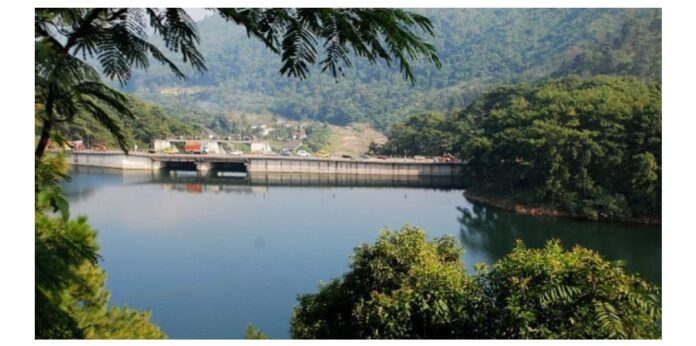Shillong, Meghalaya – The picturesque Umiam dam, an iconic landmark near Shillong known for its scenic beauty and role in harnessing the region’s water resources, is currently facing an alarming situation as it teeters on the brink of a potential shutdown. The looming crisis has prompted authorities to urgently assess the situation and take immediate measures to avert an imminent catastrophe.
The Umiam dam, also known as the Barapani Dam, holds great significance in the state of Meghalaya, serving as a crucial source of hydroelectric power generation, irrigation, and drinking water supply for the region. However, a combination of factors has led to its current critical state, necessitating swift action to prevent severe consequences for the local population and the environment.
One of the primary concerns contributing to the imminent shutdown is the excessive siltation that has accumulated in the reservoir over the years. Sediments carried by the Umiam River, originating from upstream activities such as deforestation and unregulated mining, have resulted in the reduced storage capacity of the dam. As a result, the dam’s ability to meet the increasing water demands of the region is severely compromised.
Moreover, the impact of climate change cannot be overlooked in this context. Erratic rainfall patterns, prolonged dry spells, and increased instances of extreme weather events have further exacerbated the challenges faced by the dam. These climatic fluctuations have disrupted the natural flow of water and adversely affected the dam’s efficiency, posing a significant threat to its long-term sustainability.
The impending shutdown of the Umiam dam would have far-reaching ramifications for the region. The loss of hydroelectric power generation would result in a substantial energy deficit, leading to potential power outages and hampering the state’s development initiatives. Furthermore, the impact on irrigation and drinking water supply would have detrimental effects on agriculture, livelihoods, and public health, amplifying the urgency to address the crisis.
To avert this potential disaster, the authorities must take immediate action. Sustained efforts are needed to tackle the issue of siltation, including implementing effective sediment management strategies and promoting sustainable land use practices upstream. Additionally, investments in modernizing the dam’s infrastructure and adopting advanced technologies to mitigate the effects of climate change are crucial.
Collaboration between the government, environmental organizations, and local communities is paramount to finding viable solutions. Public awareness campaigns should be launched to educate the masses about the importance of preserving the dam and the urgent need for collective action to protect this invaluable resource.
The Umiam dam stands as a symbol of Meghalaya’s rich natural heritage and has played a vital role in shaping the lives of the people in the region. Its impending shutdown represents a wake-up call, urging stakeholders to prioritize sustainable water resource management and take swift action to safeguard the dam’s future.
Time is of the essence, and concerted efforts must be made to restore the Umiam dam’s functionality and ensure its continued contribution to the development and well-being of Meghalaya and its inhabitants. Failure to address this critical situation promptly would not only risk the loss of a significant landmark but also have severe repercussions for the state’s socio-economic fabric.




